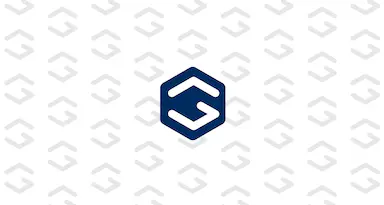
8.10.2023 / Home Buying Tips
The Life of Your Mortgage

Whether you're just beginning the home buying process or are well into your mortgage term, it's helpful to understand how your mortgage works. This guide walks you through the process from application to full repayment. You will also learn what happens when you want to refinance your loan, or the loan is sold.
How Do You Get Started?
Taking out a mortgage on a home is a major life step. It's probably the biggest debt you will ever assume. Considering you'll be tied to the repayment terms for 15 to 30 years, it's a good idea to review how the process works. Your loan will have unique loan terms and interest rates assigned to it, but all mortgages follow the same life cycle. Learning the steps helps you gain more confidence in the process should you choose to take on a mortgage or refinance your home.
This first step is the application process. When you submit your loan application, the mortgage life cycle officially begins. After you shop around for low rates and loan terms, you fill out an application for a lender you choose.
Next, the lender considers your application.
What’s The Mortgage Process Like?
The mortgage process includes consideration and approval by a lender and the closing. After you put in your application, the bank or financial institution runs a credit check and decides whether you’re a safe risk. All the information on your application is verified, and an appraiser performs an evaluation on the property you want to buy. Usually, underwriters or investors weigh in on the decision if the mortgage is held by a brokerage or smaller financial institution.
Closing
After the lender approves the loan and secures the money for it, you enter the closing process. Out-of-pocket closing costs include:
Application fees
Inspection costs
Attorney's fee
Title insurance
Filing costs for the county clerk's office
Once the loan closes, you are legally responsible for the debt and there's a lien on the property in the lender's name. If you fail to make the payments, the property ownership reverts to the lender.
What Is Refinancing Your Mortgage?
When interest rates are lower, you may decide to refinance the loan for more favorable terms. This is a good way to switch from a 30-year to a 15-year term, for example. By refinancing, you can reduce your payments, get a lower interest rate, or borrow cash to remodel your home — as long as you're still living in the property.
There are two other ways to borrow against the value of your home: getting a second mortgage and signing up for a reverse annuity mortgage. These options apply to homeowners who have built equity in their homes. To build equity, you can make regular and extra payments. Rising property values in your area also increase your equity, which is the difference between the sales price of the property and its current market value.
Second Mortgage/Home Equity/HELOC
If you need a large amount of cash, you might want to consider taking out another mortgage, known as a Home Equity Loan. Homeowners use these funds to pay off debts, remodel, and pay for their kids' college tuition. Since these loans are a higher risk for lenders, they often come with a higher interest rate.
Another second mortgage option is the Home Equity Line of Credit (HELOC). A HELOC is different from a home equity loan because you don't get the full amount upfront. Instead, you receive a line of credit for the maximum amount that can be borrowed. It works something like a credit card, but your home serves as collateral. Let's say you have a $50,000 line of credit on your home. You borrow $20,000 and pay back $10,000. Your total line of credit is always the approved amount of $50,000. In this case, you can still borrow up to $40,000 since you have repaid part of what you borrowed.
Reverse Mortgages
A reverse mortgage targets senior citizens, aged 62 and older. You can use your equity as an income supplement. Instead of making monthly payments, the lender pays you.
Reverse mortgages, or reverse annuity mortgages, do not require an income or credit check. However, you still must pay the taxes, insurance, and maintenance on your home. Here are some of the requirements to qualify for a reverse mortgage:
Cannot be delinquent on federal loans.
Must live in the property.
Must own the home or have a mortgage balance that can be paid as part of the closing.
The following conditions may cause the loan to be due in full:
You move out of the home.
The home is sold.
You don't live in the home for a full year.
The property tax or homeowners insurance isn't paid.
Failure to keep up proper maintenance on the property.
The last surviving borrower dies—the estate has six months to repay the loan or sell the property.
What Happens If Your Mortgage Is Sold?
After the closing, some or all of the loan may be sold to other lenders. Usually, the lender keeps the collection rights of the loan and continues to process your payments. If this affects your payments, you will receive a notification.
What Happens When You Pay Off Your Loan
The loan must be paid off by the maturation date or it goes into default. Depending on how your loan is structured, there may be remaining principal due at this time. Paying off your mortgage loan puts you in a new phase of homeownership.
After you repay the loan, you're still responsible for taxes and insurance on the property. Insurance becomes an option at this point, while taxes must be paid to avoid a tax lien on your property.
Keep in mind that you must pay off any second mortgages, such as HELOCs, ELOCs and reverse mortgages to truly own your home. Many lenders require home insurance, and sometimes fire and flood insurance, as a condition of the home loan. However, you should strongly consider maintaining insurance on your home to prevent a catastrophic loss. You worked hard to pay off your mortgage — protect that investment.
Sources
Gerard, Jack. “Life Cycle of a Mortgage.” The Nest, The Nest, 21 Nov. 2017, budgeting.thenest.com/life-cycle-mortgage-3291.html.
“The Life of a Mortgage Loan.” NFM Lending, NFM Lending, 10 Jan. 2018, nfmlending.com/the-life-of-a-loan/.


